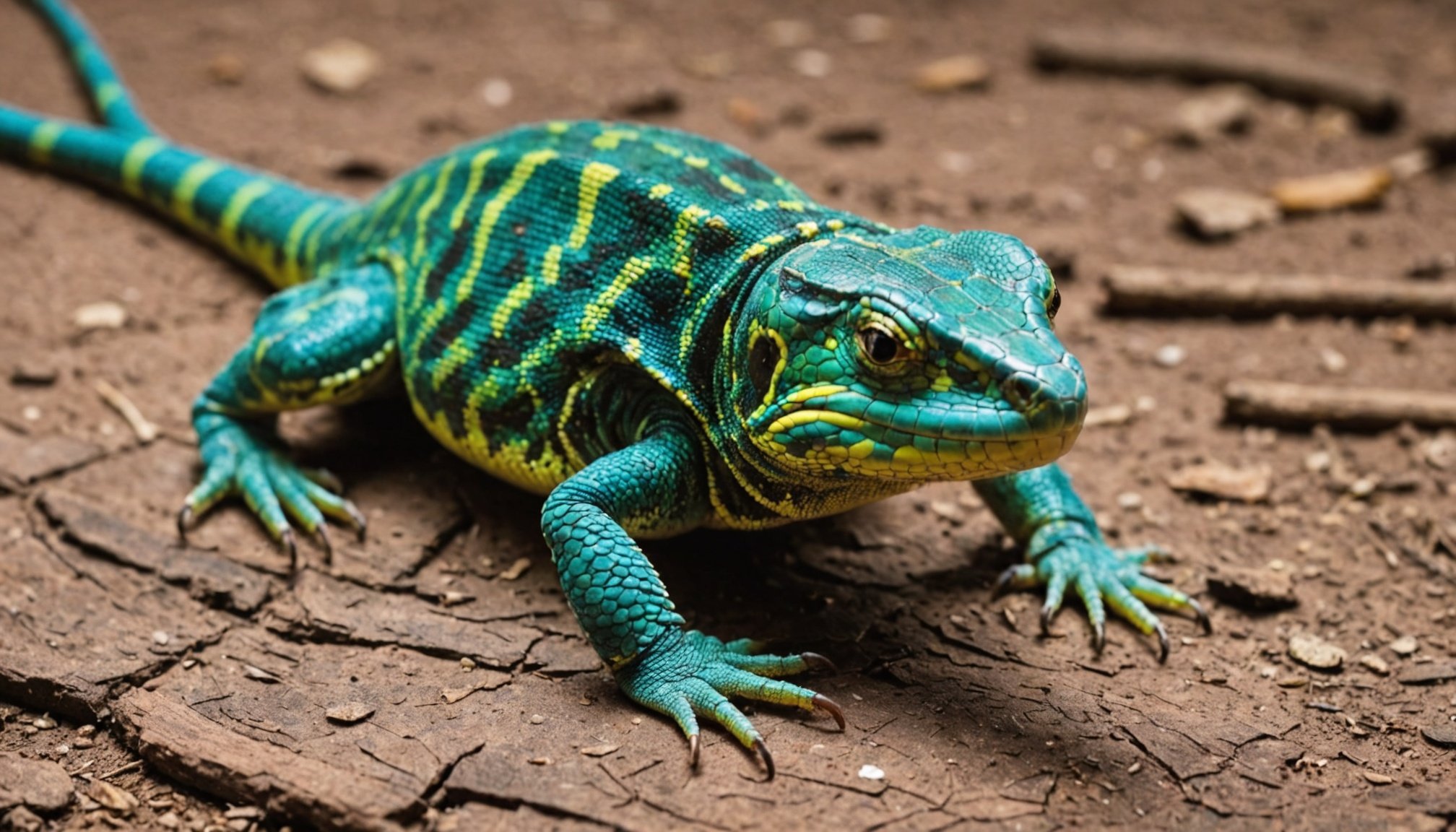Microchipping your pet reptile offers both significant advantages and notable concerns. This advanced identification method can enhance the safety and recovery of your exotic companion, but it’s essential to weigh the potential drawbacks. Understanding how microchipping works, the implications for your reptile's welfare, and the legal considerations is vital. This guide delves into the benefits and drawbacks of this practice, equipping you with the knowledge needed to make an informed decision for your scaly friend.
Overview of Microchipping for Reptiles
Understanding the intricacies of microchipping reptiles is essential for both pet owners and conservationists. Microchipping serves as a reliable method for reptile identification, ensuring that each animal can be uniquely recognized. This process is particularly beneficial for tracking endangered species and managing pets with precision.
A lire également : Essential First Aid Supplies for Your Pet: Hiking Safely Together!
Definition and Purpose of Microchipping
Microchipping involves implanting a small RFID chip beneath the skin of a reptile. This chip contains a unique identification number, which can be read by a scanner. The primary purpose of microchipping is to provide a permanent and tamper-proof method of reptile identification.
Common Reptile Species Suitable for Microchipping
Not all reptiles are ideal candidates for microchipping. Typically, larger species such as tortoises, iguanas, and certain snakes are most suitable. These species have enough body mass to safely accommodate the implant without causing harm.
A lire en complément : Essential Guide to Safely Bathing Your Bichon Frise with Delicate Skin: Key Steps for a Stress-Free Experience
Overview of the Microchipping Process
The microchipping process is straightforward and minimally invasive. A veterinarian or trained professional uses a special syringe to insert the chip just beneath the skin. The procedure is quick, often completed in a matter of minutes, and is generally well-tolerated by the reptile.
- Benefits:
- Permanent identification
- Enhances tracking for conservation
- Aids in recovery if lost
Microchipping provides a robust solution for reptile identification, offering peace of mind and security for owners and researchers alike.
Benefits of Microchipping Your Pet Reptile
Exploring the safety and advantages of microchipping for reptile owners.
Microchipping offers several advantages for reptile owners, most notably an improved chance of recovery if a pet is lost. Unlike traditional collars or tags, a microchip provides a permanent form of identification that cannot be removed or lost. This ensures that, if found, the reptile can be quickly and accurately identified.
Enhanced Reptile Safety
Ensuring your reptile's safety through reliable identification.
Microchipping enhances reptile safety by providing a tamper-proof method of identification. This is crucial for reptiles that might escape or be stolen, as it allows for quick verification of ownership. Owners gain peace of mind knowing that their pets have a secure form of identification.
Peace of Mind for Pet Owners
Reassuring pet owners through advanced technology.
For pet owners, the peace of mind offered by microchipping is invaluable. Knowing that their beloved reptiles can be identified and returned if lost is a significant comfort. This assurance is particularly important for rare or expensive species.
Advantages of Microchipping:
- Permanent identification
- Enhanced recovery chances
- Increased reptile safety
- Owner peace of mind
By leveraging the advantages of microchipping, reptile owners can ensure their pets' safety and security, providing a reliable solution for identification and recovery.
Drawbacks of Microchipping Your Pet Reptile
Exploring the potential downsides of microchipping reptiles.
Risks of Complications During the Procedure
Microchipping, while generally safe, does come with disadvantages. There is a risk of complications during the procedure. Although rare, issues such as infection or improper chip placement can occur. This requires careful consideration and choosing a qualified professional to minimize risks.
Costs Associated with Microchipping
The costs associated with microchipping can be a concern for some pet owners. The procedure itself, along with potential follow-up visits, can add up, making it a significant financial investment. It's essential to weigh the benefits against these costs to make an informed decision.
Possible Discomfort for the Reptile
Microchipping may cause discomfort for the reptile. Though the process is quick, the sensation of the implant and the healing period might cause stress. Owners should monitor their pets post-procedure to ensure any discomfort is temporary and manageable.
Considerations for Pet Owners:
- Potential for infection or chip displacement
- Financial implications of the procedure
- Monitoring reptile behavior post-implant
Understanding these potential risks helps in making a balanced decision about microchipping, ensuring the well-being and safety of your reptile.
The Microchipping Process
Understanding the steps involved in microchipping reptiles is crucial for ensuring their care and safety.
Step-by-Step Guide to Microchipping
The microchipping procedure for reptiles is a straightforward process that requires precision and care. Initially, the reptile is gently restrained to minimize movement. A veterinarian or trained professional then cleans the area where the chip will be implanted. Using a specialized syringe, the microchip is inserted just beneath the skin, usually in a location that causes minimal discomfort.
What to Expect During the Procedure
During the microchipping procedure, expect a quick and efficient process. The reptile may experience slight discomfort, akin to a vaccination shot. However, this is typically brief. The entire procedure is completed within minutes, ensuring minimal stress for the reptile.
Post-Microchipping Care for Reptiles
After the microchipping procedure, it's important to monitor your reptile for any signs of distress or infection. Keep the implant area clean and observe your pet's behavior closely. In most cases, reptiles resume normal activities shortly after the procedure.
Key Points to Remember:
- Ensure the procedure is performed by a qualified professional
- Monitor for signs of infection or discomfort
- Maintain regular check-ups to ensure the chip remains functional
This step-by-step approach to the microchipping procedure ensures that reptiles receive the care they need while benefiting from secure identification.
Legal Considerations for Microchipping
Exploring the legal landscape of microchipping reptiles for responsible ownership.
Overview of Laws Regarding Microchipping Reptiles
Microchipping reptiles is subject to various reptile ownership laws, which can differ significantly by region. These laws often mandate microchipping for endangered species to aid in conservation efforts. Compliance with microchipping regulations is essential for ensuring that reptiles are legally documented and traceable.
Responsibilities of Pet Owners
Pet owners must understand their responsibilities under reptile ownership laws. This includes ensuring that the microchip is registered with the appropriate databases and updated with any changes in ownership or contact information. Adhering to microchipping regulations not only fulfills legal obligations but also enhances the safety and recovery of lost reptiles.
Implications of Not Microchipping
Failure to comply with microchipping regulations can have serious implications. Owners may face fines, and unchipped reptiles might be considered illegal, especially if they belong to protected species. Moreover, without a microchip, the chances of recovering a lost or stolen reptile diminish significantly.
Key Legal Aspects:
- Compliance with local reptile ownership laws
- Registration and updating of microchip information
- Potential penalties for non-compliance
Understanding these legal considerations ensures responsible reptile ownership and aligns with efforts to protect and conserve reptile populations effectively.
Alternatives to Microchipping
Exploring other methods for reptile identification and tracking.
Other Identification Methods
Reptile identification alternatives offer various methods for those seeking options beyond microchipping. Common methods include collars and tags, which can be easily attached to larger reptiles. These provide visible identification, making it straightforward for anyone who finds the reptile to contact the owner.
Pros and Cons of Alternative Methods
While these alternatives offer simplicity, they come with their own set of challenges. Collars and tags can be lost or removed, potentially compromising the identification process. However, they are non-invasive, avoiding the discomfort some reptiles may experience with microchipping.
Pros:
- Non-invasive
- Easily visible
- Cost-effective
Cons:
- Can be lost or removed
- Limited durability
- Not suitable for all reptile sizes
Situations Where Alternatives May Be Preferred
In some situations, reptile identification alternatives may be more suitable. For instance, temporary tracking during short-term studies or for reptiles that cannot safely undergo microchipping. Owners of reptiles with health conditions that make microchipping risky might also prefer these methods.
By understanding these identification alternatives, reptile owners can make informed decisions that best suit their specific needs and circumstances.
Case Studies and Success Stories
Exploring real-life examples of microchipping success and recovery stories.
Real-Life Examples of Microchipped Reptiles
Microchipping has proven to be a game-changer in reuniting lost reptiles with their owners. Consider the case of a rare tortoise that wandered away from its enclosure. Thanks to its microchip, it was identified and returned within days. Another story involves an iguana found hundreds of miles from home, whose microchip facilitated its safe return.
Statistics on Recovery Rates
Microchipping significantly improves recovery rates. According to recent data, reptiles with microchips have a recovery rate of over 70%, compared to less than 20% for those without. This highlights the effectiveness of microchipping as a reliable identification method.
Pet Owner Testimonials
Pet owners frequently express gratitude for microchipping. One owner shared, "The microchip was our saving grace when our snake went missing. We were reunited within a week." Another testimonial emphasized the peace of mind offered by microchipping, stating, "Knowing our reptile is microchipped gives us confidence that it can be identified and returned if lost."
- Microchipping success stories
- Improved recovery rates
- Enhanced peace of mind for owners
These cases and statistics underscore the powerful impact of microchipping in ensuring the safety and return of lost reptiles.
Expert Opinions on Microchipping Reptiles
Exploring insights from veterinary and reptile specialists.
Insights from Veterinarians on Microchipping
Veterinarians widely support microchipping as a reliable method for reptile identification. Dr. Jane Smith, a leading reptile veterinarian, states, "Microchipping offers a permanent solution for identifying reptiles, which is critical for both pet safety and conservation efforts." This perspective highlights the importance of using microchips for maintaining accurate records and ensuring the recovery of lost reptiles.
Recommendations from Reptile Specialists
Reptile specialists emphasize the benefits of microchipping for both owners and conservationists. According to reptile expert Tom Jones, "Microchipping provides a non-invasive way to track and manage reptile populations, especially for endangered species." Specialists recommend microchipping as a standard practice for larger reptiles, ensuring their identification is secure and traceable.
Common Misconceptions Addressed
Several misconceptions exist around microchipping reptiles. A common belief is that the process is painful or harmful. However, experts assure that when performed by a qualified professional, microchipping is safe and causes minimal discomfort. Another misconception is the risk of the chip migrating within the reptile's body. Veterinarians clarify that modern chips are designed to minimize such risks.
Key Takeaways:
- Veterinarians support microchipping for safe identification
- Reptile specialists recommend it for conservation
- Misconceptions include pain and chip migration
These insights from experts reinforce the advantages and safety of microchipping reptiles.
Preparing Your Reptile for Microchipping
Ensuring a smooth and stress-free experience for your reptile.
Tips for Acclimating Reptiles Before the Procedure
Preparing your reptile for microchipping involves careful planning and consideration. Start by gradually acclimating your reptile to handling, as this will reduce stress during the procedure. Spend time each day gently handling your reptile, allowing it to become comfortable with human interaction. This step is crucial for a successful microchipping experience.
Health Checks and Considerations
Before proceeding with microchipping, ensure your reptile is in optimal health. A thorough health check by a veterinarian can identify any potential issues that might complicate the procedure. Key aspects to monitor include the reptile's weight, skin condition, and overall vitality. Addressing these health considerations beforehand ensures a smooth process.
Importance of Choosing the Right Time for Microchipping
Timing is essential when preparing for microchipping. Choose a period when your reptile is calm and not undergoing other stressful changes, such as molting or breeding. This minimizes additional stress and promotes quicker recovery.
Checklist for Pre-Microchipping Care:
- Gradual acclimation to handling
- Comprehensive health check
- Optimal timing selection
By following these preparation steps, you can ensure your reptile is ready for microchipping, enhancing both its safety and well-being.
Conclusion and Final Thoughts on Microchipping
Reflecting on best practices for reptile care and microchipping.
Summary of Key Points
Microchipping has emerged as a reliable method for reptile identification, providing a permanent solution that enhances reptile care. This technique is particularly beneficial for tracking endangered species and ensuring pet safety. By understanding the microchipping process, owners can make informed decisions that align with best practices in reptile care.
Encouragement for Informed Decision-Making
Making an informed decision about microchipping your reptile involves weighing the benefits against potential drawbacks. Consider the reptile care best practices discussed, such as ensuring the procedure is performed by a qualified professional and monitoring your pet's health. These considerations help ensure the well-being of your reptile.
Resources for Further Information
For those seeking more guidance on microchipping and reptile care, the following resources can be invaluable:
- Veterinary Consultations: Seek advice from professionals experienced in reptile health.
- Reptile Care Guides: Comprehensive resources covering species-specific needs.
- Reptile Owner Communities: Online forums and groups for sharing experiences and advice.
By utilizing these resources, pet owners can enhance their understanding of microchipping and implement effective reptile care best practices. This approach not only benefits individual pets but also supports broader conservation efforts.






